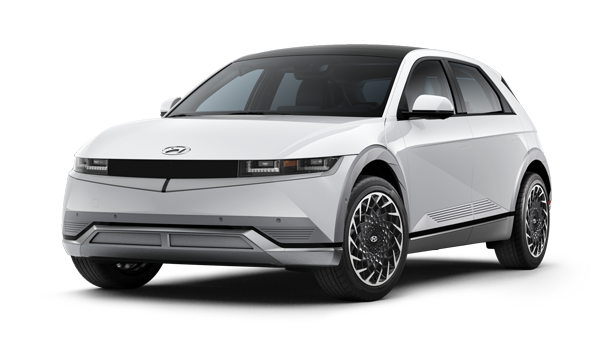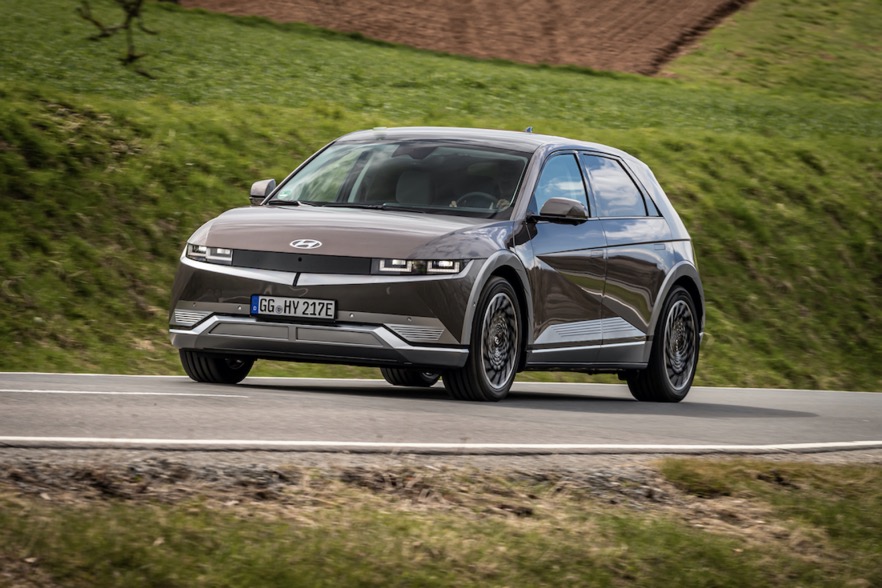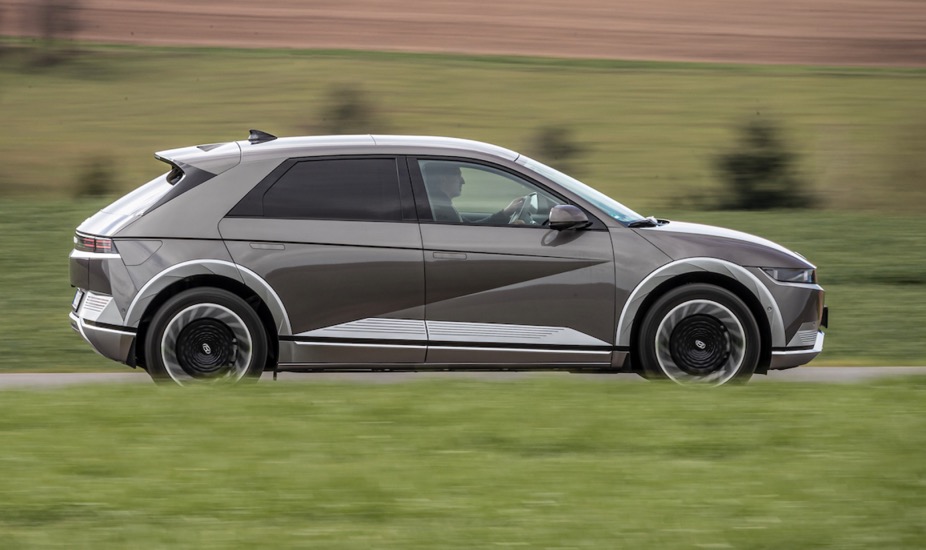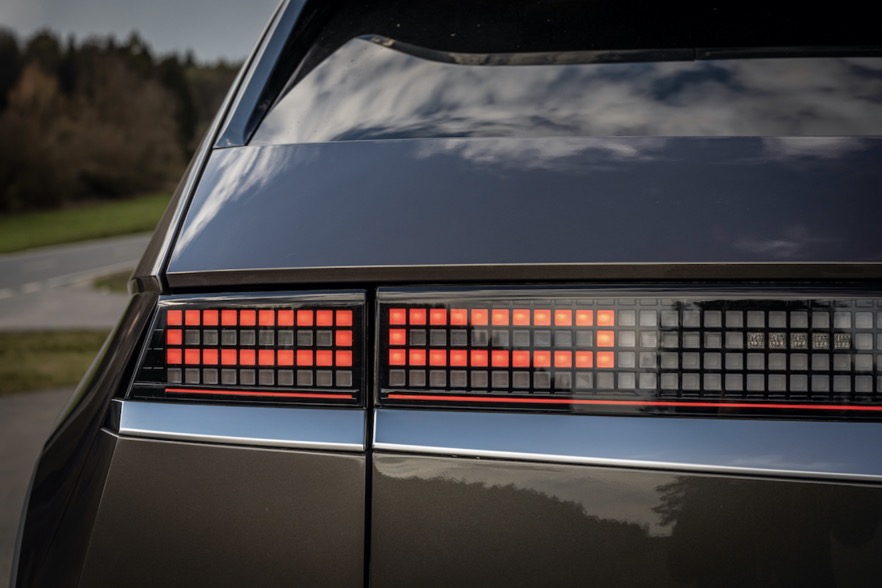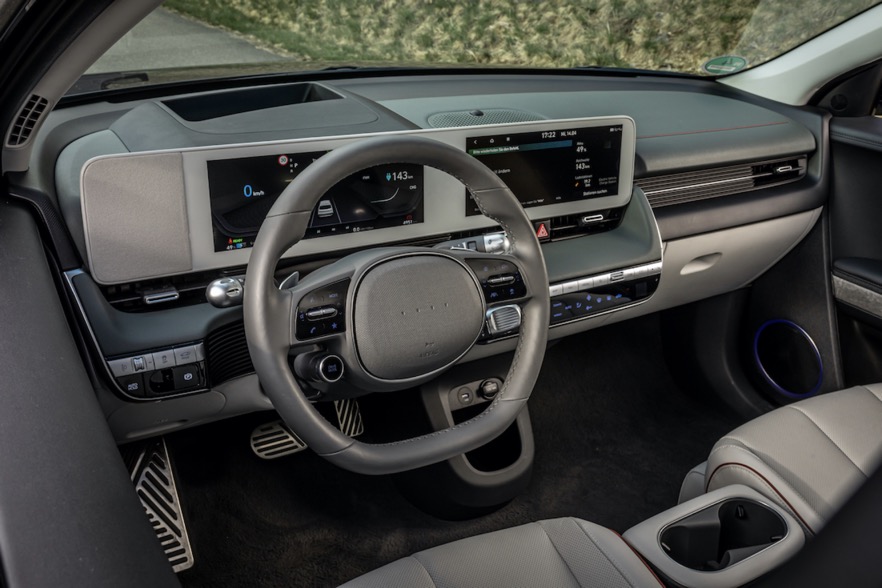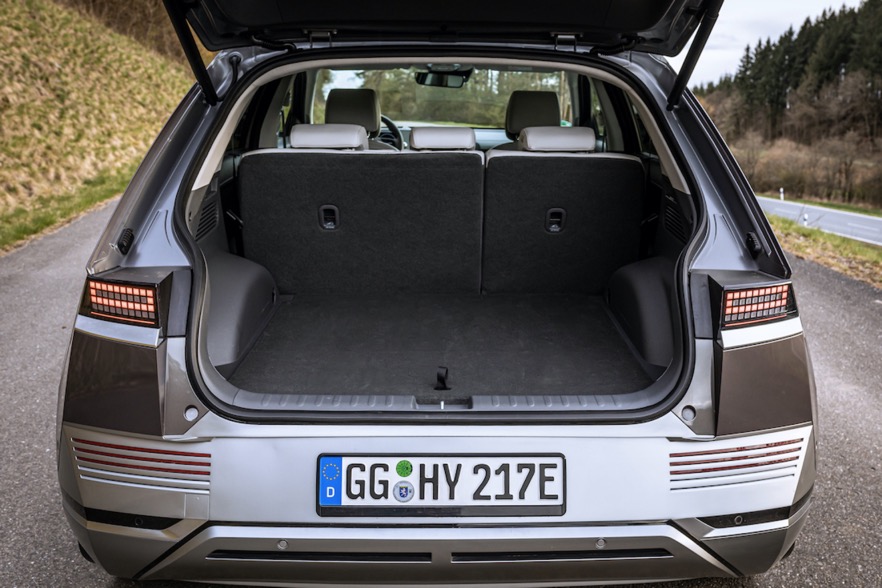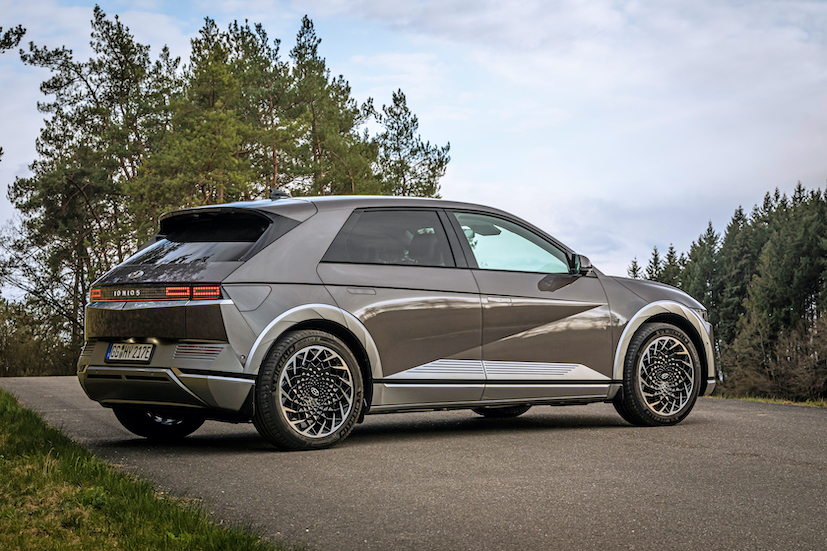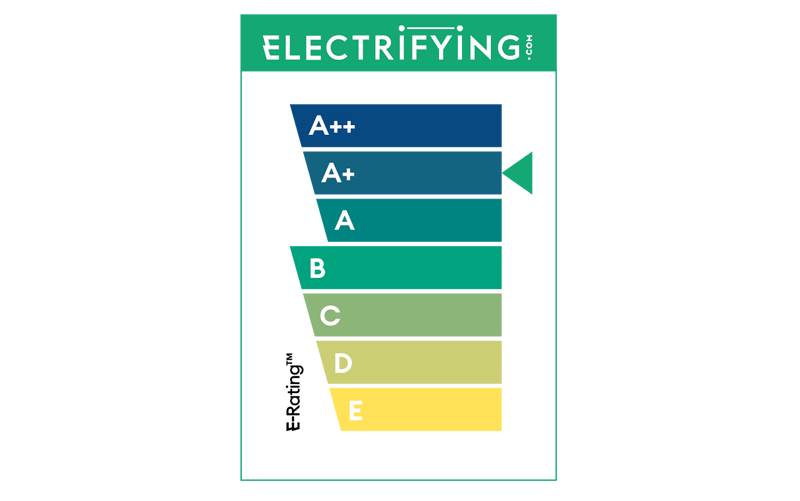Practicality and Boot Space
This is a car whose styling isn’t just cool, it’s magic. It looks like a relatively small hatchback in pictures or from a distance – like the 1970s Hyundai Pony its style mimics, in fact – but in reality you’re looking at something properly chunky and which is the size and weight of most medium-sized SUVs. The good news is this is reflected in passenger and boot space. A flat floor allows you to slink between the front seats without getting out the car – handy in tight spaces – while the centre console slides forwards or backwards 140mm depending on whether you need more space in the front or back. Hyundai calls it the ‘Universal Island’, which is a bit grand, but it really does make sense to adapt the interior space to whatever you need. We’ve seen this on other electric cars, but it’s still a cool feature.
The IONIQ 5’s seats can fold flat into a bed, too. There’s loads of room for rear passengers – out of bedroom mode, naturally – with a three-pin socket available for powering a laptop, while the boot is full size and there’s a little frunk up front for additional storage. There are a few bits where the plastic feels a little low-rent, but overall this is better looking - and feeling - than its VW rivals. And that’s not something we thought we’d be saying about Hyundai products a few years ago.
Technology
20W Summary : there’s loads of tech as standard, as well as a generous amount of safety systems too. You get what you pay for here.
The styling may look back fondly to the 1970s and ‘80s, but the technology concealed within is pure 2020s. There are over-the-air updates and a full suite of controls from your phone via Hyundai’s BlueLink app, right through to the option of a £365 ‘Vehicle 2 Load pack’, which lets you draw up to 3.6 kW of power from the IONIQ’s battery to power anything you can think of, including your own house or even other electric cars.
It’ll also sense if another vehicle is approaching from behind or the side, and temporarily lock the back doors to prevent kids from spilling themselves out in front of a car. It’s called ‘safe exit assist’ and it’s a genuinely thoughtful application of active safety systems.
Then there’s the solar roof. Hyundai reckons that if the weather is kind it could actually add three or four miles of range a day, more if you live somewhere extra sunny. That doesn’t sound like much, but if you add it up over a year, it's worth having. It’s an option, and it won’t be available on the first wave of UK cars, but hopefully it’ll come.
Safety
When the safety tech is applied so thoughtfully, it’s relatively little surprise that Euro NCAP gave the Hyundai IONIQ 5 its full five-star rating. This is an EV that crashes well, losing most points when it comes to pedestrian protection, which suffers from the car’s lack of an active bonnet.
It’s stocked with safety systems as standard, with speed limit assist, lane keep assist, hill start assist and forward collision avoidance assist functions fitted at every level of spec. That’s a lot of assistance. A couple of systems are saved for higher spec levels or part of options packs, such as full park assist and blind-spot monitoring. But the IONIQ 5 can hold its head pretty high when it comes to keeping you safe.











